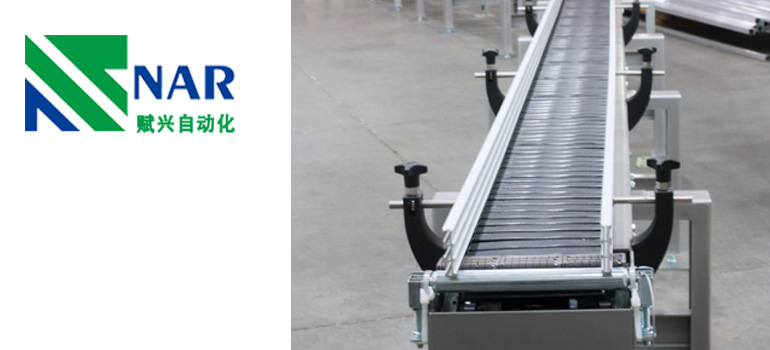Summary:
Chain conveyors are used in production lines to move products from one end to the other. Choosing the appropriate chain conveyor is crucial.
3 Types of chain conveyor
What is a chain conveyor?
Classification of chain conveyors
What are the advantages and disadvantages of chain conveyors?
With the development of the industry, the characteristics of conveyors are also changing. Chain conveyors are used in production lines to move products from one end to the other. Choosing the appropriate chain conveyor is crucial.
The following will introduce the classification and advantages and disadvantages of chain conveyors.
What is a chain conveyor?
The continuous conveyor is a conveyor that uses chain traction and load, or uses Flat noodles, metal mesh belt and roller bed installed on the chain to carry materials.
Widely used for automatic transportation, distribution, and online transportation of food, canned goods, pharmaceuticals, beverages, cosmetics and washing products, paper products, seasonings, dairy industry, tobacco, etc.
Classification of chain conveyors
Chain conveyor
Chain plate conveyor, composed of power unit (motor), transmission shaft, drum, tensioning device, sprocket, chain, bearing, lubricant, chain plate, etc
Chain conveyor can meet the requirements of single row transportation for beverage labeling, filling, cleaning and other equipment. It can also turn a single row into multiple rows and walk slowly, resulting in storage capacity and meeting the requirements of a large amount of material supply for sterilization machines, bottle storage platforms, and cold bottle machines. We can create overlapping mixed chains at the head and tail of the two chain conveyors, making the bottle (can) body in a dynamic and excessive state, so that there are no bottles left on the conveyor line, It can meet the pressure and pressure free transportation of empty and real bottles.
Net Conveyor
A mesh belt conveyor is a material handling machine that continuously transports materials on a certain route. It can be used for horizontal, inclined, and vertical conveying, and can also form a spatial conveying line. The conveying line is generally fixed. The conveyor has a large conveying capacity and a long haul distance, and can also complete several process operations simultaneously during the conveying process.
Suspension chain machine
Suspension chain is a three-dimensional closed-loop continuous conveying system suitable for automated transportation of finished items within and between workshops. It can turn and climb freely, adapt to various geographical conditions, and is mainly used for air distribution of materials in workshops.
What are the advantages and disadvantages of chain conveyors?
advantage:
The conveyor has a large conveying capacity and is efficient enough to transport a large amount of materials in a small space, with a conveying capacity of 6m3/h~600m3/h.
Low energy consumption for conveying, utilizing the internal friction force of the material to change the pushing force of the material to the pulling force, resulting in a 50% electricity saving compared to screw conveyors.
Sealed and safe, the fully sealed casing makes dust seamless and drillable, ensuring safe operation and reliable operation.
The conveyor chain has a long service life and is made of alloy steel processed by advanced heat treatment methods. Its normal service life is>5 years, and the roller life on the chain (according to different materials) is ≥ 2-3 years.
The process layout is flexible, and can be arranged on an elevated, ground or pit basis. It can be installed horizontally or uphill (≤ 15 °), or horizontally and uphill on the same machine, and can be fed and fed from multiple points.
Low usage cost, power saving and durability, minimal maintenance, and low cost (approximately 1/10 of the spiral machine), ensuring the normal operation of the host to increase output, reduce consumption, and improve efficiency.
Disadvantages:
Chain conveyors are prone to damage when used for heavier materials. In addition, if a part of the chain breaks, the entire chain needs to be repaired. This will affect the efficiency of the entire conveying system and result in high costs, as the entire chain needs to be removed for repair or replacement. Due to continuous metal to metal contact, this may lead to excessive wear or contamination of the parts.
Chain conveyors are applied in many industries, and they can handle a large number of products and work together with other conveyors. Its use can improve productivity and reduce labor risks.
If you need to know about chain conveyor solutions, please HUBUNGI KAMI.

